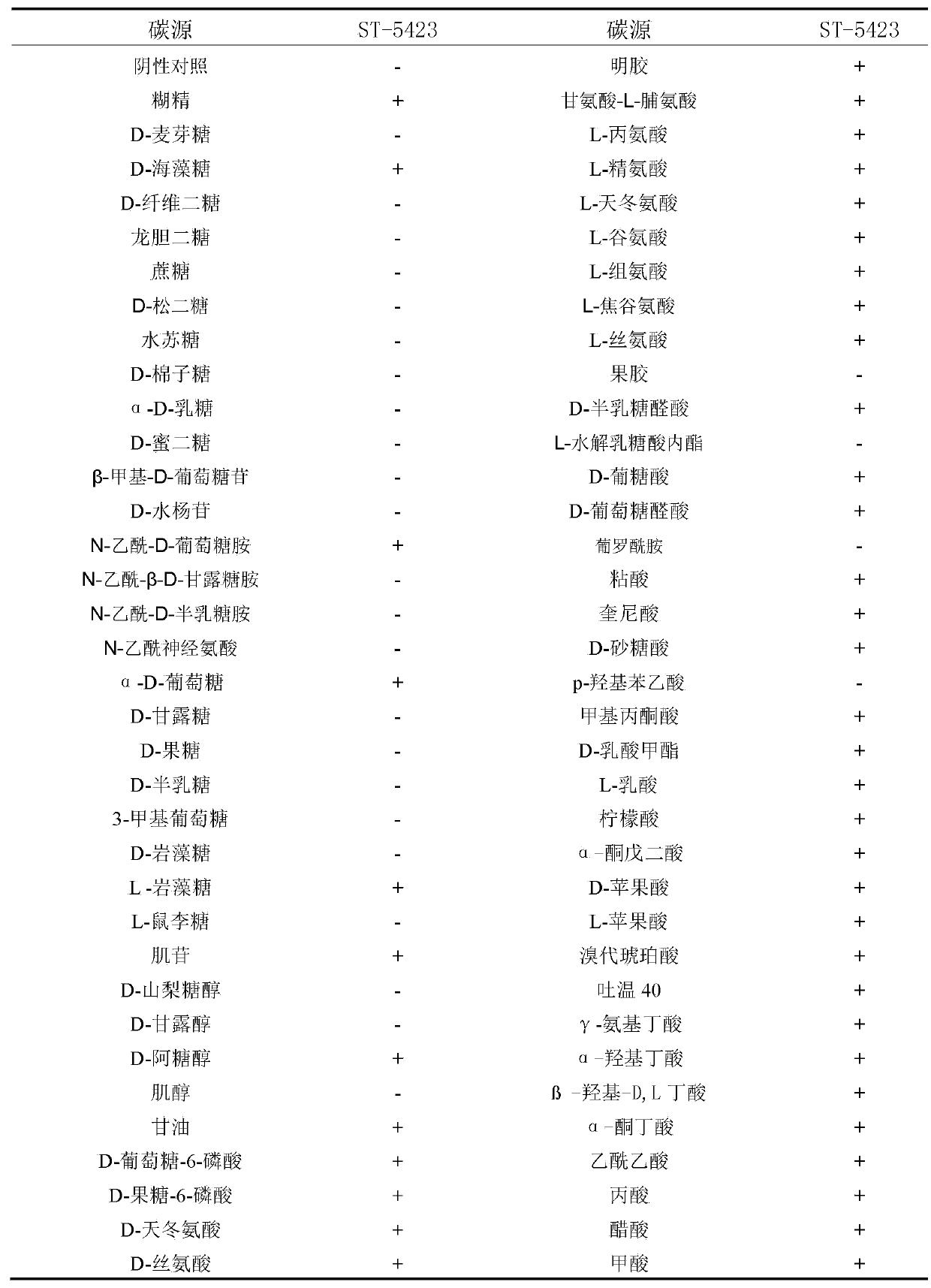Streptomyces toxytricini and applications of streptomyces toxytricini in preparation of lipstatin
A technology of streptomyces and statins, which is applied in bacteria, microorganism-based methods, biochemical equipment and methods, etc., can solve the problems of unstable production capacity, inability to industrialize production, and low yield, and achieve extraction and purification. The process is simple, the yield and purity are improved, and the fermentation by-products are less.
- Summary
- Abstract
- Description
- Claims
- Application Information
AI Technical Summary
Problems solved by technology
Method used
Image
Examples
Embodiment 1
[0027] Example 1: The culture characteristics of Streptomyces toxotris ST-5423
[0028] The strain of Streptomyces toxotris ST-5423 was inoculated on glycerol asparagine agar, yeast extract malt extract agar and other media for observing morphological characteristics. Incubate at 28°C for 5, 8, 10 days, observe and describe. The results are shown in Table 1.
[0029] Table 1. Colony characteristics of strains of Streptomyces toxotris ST-5423 on various media
[0030] Medium
Embodiment 2
[0031] Example 2: Carbon source utilization and physiological and biochemical characteristics
[0032] Physiological and biochemical properties adopt the standard method in the classification of Streptomyces toxin.
[0033] Using the Biolog (GENⅢ) automatic microbial identification system, 94 phenotypic tests were performed on the strain Streptomyces toxytricini ST-5423, including 71 carbon source utilization tests and 23 chemical sensitivity tests: the strain was inoculated on BUG+B plate medium Incubate at a constant temperature of 28°C for 16 hours, wash the bacteria on the plate with a sterile cotton swab, mix with the inoculum (IF-C) to make a bacterial suspension, and adjust to 98% T / FF with a turbidimeter. Use an 8-hole electric liquid feeder to add the bacterial suspension to each well of the Biolog (GENⅢ) micropores, 100μl per well. Place the microwell identification plate in a 28°C incubator, and place it on a Biolog reader to read the results after culturing for 12h, 24...
Embodiment 3
[0041] Example 3: Production, fermentation and cultivation of lipristatin
[0042] 1. Seed strain cultivation and preservation
[0043] Solid medium: glucose 5g, yeast extract 5g, malt extract powder 5g, magnesium sulfate 0.2g, potassium dihydrogen phosphate 0.5, agar 18g, 1000ml of water, pH 7.0
[0044] Cultivation: The strains are inoculated on a solid medium slant and cultivated at 28°C for 7-10 days.
[0045] After the solid culture is completed, place it on a slope at 4°C and refrigerate for later use.
[0046] 2. Shake bottle seed culture
[0047] Medium: starch hydrolyzed sugar 20g, glycerin 60g, potato extract powder 10g, soybean meal powder 6g, vegetable peptone 4g, yeast powder 20g, MgSO4 2g, ZnSO4 6g, add 2L water, pH7.0.
[0048] Cultivation: 26°C, 28h, 200rpm
[0049] When the mycelium grows, there is obvious wall hanging phenomenon and the bacteria concentration is about 9%. Put 2L shake flask seed culture solution into the following seed tank.
[0050] 3. Seed pot seed ...
PUM
| Property | Measurement | Unit |
|---|---|---|
| diameter | aaaaa | aaaaa |
Abstract
Description
Claims
Application Information
 Login to View More
Login to View More - R&D
- Intellectual Property
- Life Sciences
- Materials
- Tech Scout
- Unparalleled Data Quality
- Higher Quality Content
- 60% Fewer Hallucinations
Browse by: Latest US Patents, China's latest patents, Technical Efficacy Thesaurus, Application Domain, Technology Topic, Popular Technical Reports.
© 2025 PatSnap. All rights reserved.Legal|Privacy policy|Modern Slavery Act Transparency Statement|Sitemap|About US| Contact US: help@patsnap.com


